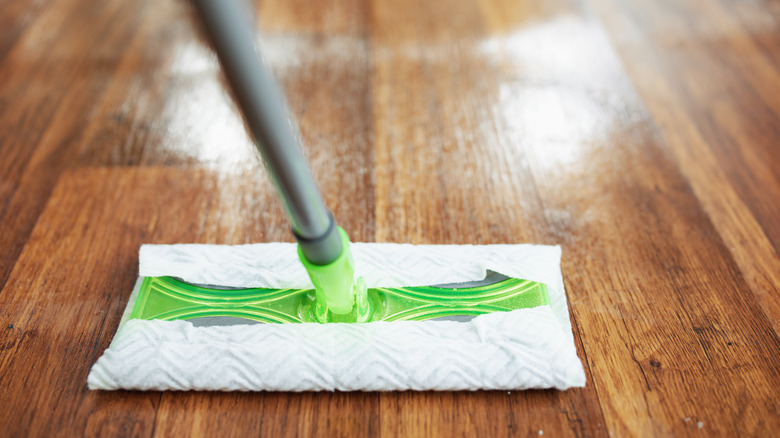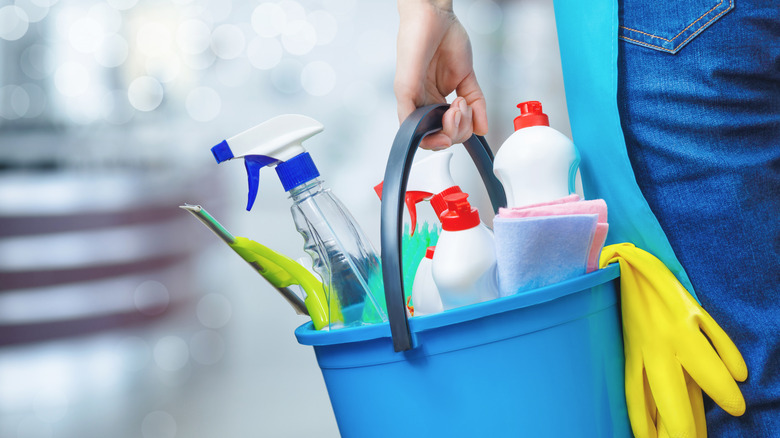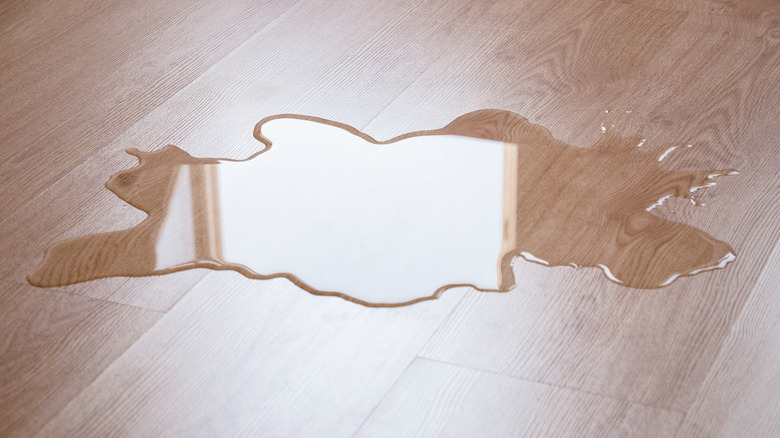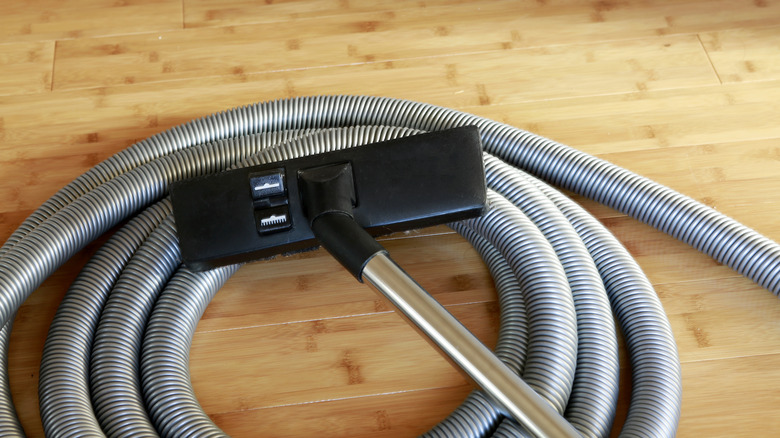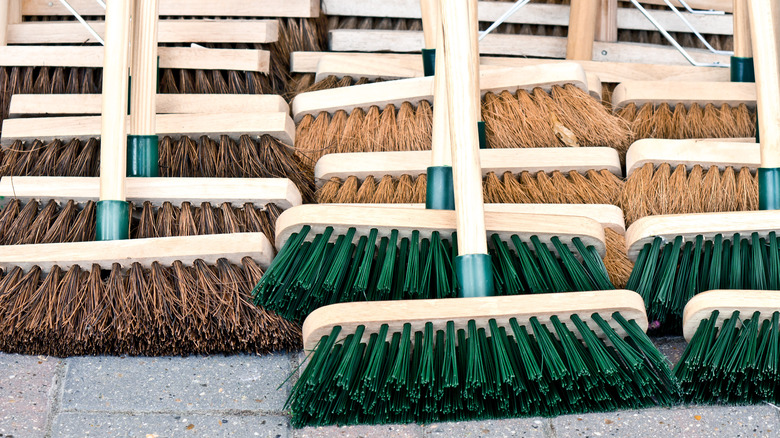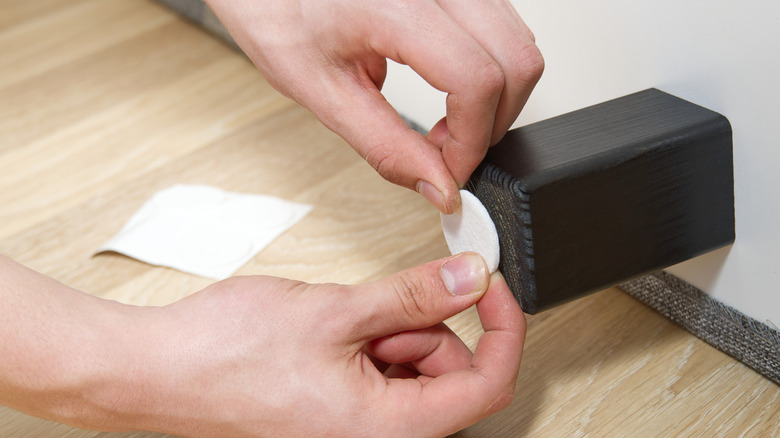5 Mistakes Everyone Makes When Cleaning Their Hardwood Floors
Are your hardwood floors looking a little worse for wear? Want to make sure they look spotless instead? Unfortunately, if you aren't careful, your attempts at cleaning could make the issues worse. Not only will the damage be visibly noticeable, you may also need to replace your wood flooring sooner than anticipated. Depending on your location and the type of wood you pick, this major repair could cost in excess of $6,000, according to Home Advisor.
To minimize unnecessary expenses (not to mention repair-related headaches!), it's best to simply take proper care of your hardwood floors, which includes cleaning them regularly. But at the same time, we know it can be difficult to remember the specific dos and don'ts, especially when you consider all of the other cleaning rules for other parts of your home. To help you out, we've rounded up some of the most common mistakes that people tend to make when cleaning hardwood floors. If you avoid these common errors, your gorgeous floors are far more likely to last much longer.
Accidentally stripping the finish with cleaning products
Strong, harsh cleaning detergents can be effective when you need to get something extra clean without putting in too much elbow grease. But these types of chemicals do not mix well with some materials — including hardwood.
According to City Floor Supply, the wrong cleaning products can cause major problems for your hardwood floors. Most commercially available detergents will strip your floor's finish over time, leaving it looking scuffed up and dingy. Also, since you're probably not applying detergent to the whole floor methodologically with even pressure, chances are good that things will start to get patchy and look even worse. Spot cleaning can have the same result.
While it makes sense to assume that cleaning detergents are harmful solely because they contain harsh chemicals, you should not think you're out of the woods if you use a natural cleaning agent like vinegar on hardwood. City Floor Supply explains that vinegar can also strip away your floor's finish. Plus, the high acid content can start to eat away at the wood itself — potentially leading to scrapes and grooves.
Cleaning with water
One of the easiest ways to destroy your hardwood floors is to use water when cleaning; this is especially true if you decide to mop the floor or use water to remove any cleaning product residue, then leave it to dry. According to Nydree Flooring, the wood can absorb any water with which it comes into contact, leading to stains and swelling. The company also warns that while certain finishes or waxes can help minimize water's harm, they won't totally waterproof your hardwood floors.
Now, that's not to say you can never have water anywhere near your floors. If you accidentally spill something on the floor, it's still a good idea to do a quick spot clean with a damp, soapy piece of paper towel, because the last thing you need is an invitation for pests to roam about your home. However, you should immediately follow that up by wiping away any remaining moisture. In that same vein, don't clean by applying lots of water as you would with mopping, for example. There's simply too much moisture to work with, and chances are you can't prevent it from seeping into the wood.
Ignoring your vacuum settings and attachments
When was the last time you swapped out your vacuum attachment? Do you ever adjust its mode settings? While not every vacuum has different cleaning modes (especially if it's an older model), it's still important to make sure your vacuum is set up for hardwood floors in order to minimize unnecessary wear and tear.
According to Spotless Vacuum, not all vacuum attachments are made equal. Vacuums with stiff brushes on the bottom can scratch up your hardwood floors (as can any hard plastic wheels). When you're cleaning hardwood floors, make sure to use the correct attachment.
Similarly, Complete Chem-Dry of Lake Orion recommends always taking advantage of settings that allow you to disable your vacuum's brush rotation, which will prevent bristles from scraping along the floor and causing damage. To compensate for the lack of friction that would otherwise loosen stubborn dirt, you may want to increase your vacuum's suction power.
Using a broom with stiff bristles
If you prefer to sweep your home rather than vacuum, more power to you. But make sure that you choose your broom carefully because using the wrong one can leave your hardwood floors in bad shape.
When it comes to brooms, there's a wide variety of designs and bristle types. According to Vikan, stiff bristles essentially scrub away set-in dirt, making them best for tough-to-remove debris. This is great for durable materials like stone, but keep in mind that your hardwood floor's finish is delicate. Whenever you clean your floors, you're actually cleaning the finish rather than the wood itself. In other words, there's a good chance that stiff bristles will scratch up your floor's finish, leading to a premature repair job or replacement. To prevent unnecessary damage, opt for a soft-bristle broom. Also, be sure to keep an eye out for soft/stiff broom hybrids, which are generally helpful when sweeping on other surfaces but can still harm your hardwood.
Moving furniture without felt pads
When you're cleaning your hardwood floors, you'll inevitably come to some hard-to-reach patch blocked by a couch, table, or other piece of furniture. All you have to do is move the furniture, clean, and replace it when you're done. However, it's easy to accidentally scratch the floor in the process, leading to unsightly marks and more wear and tear.
Fortunately, there's a cheap and easy way to prevent scratches by placing small felt pads underneath the legs of your furniture. These floor protectors are affordable and easy to find in any hardware store, making them an extremely welcome expense when compared against the cost of a refinished floor. Note that felt pads are infamous for detaching while moving, especially if your chosen brand goes cheap on the adhesive. According to The Washington Post, you can fix the issue by choosing felt pads that attach with a nail, minimizing the chance that dirt, grime, or just plain old friction will sweep them away.
